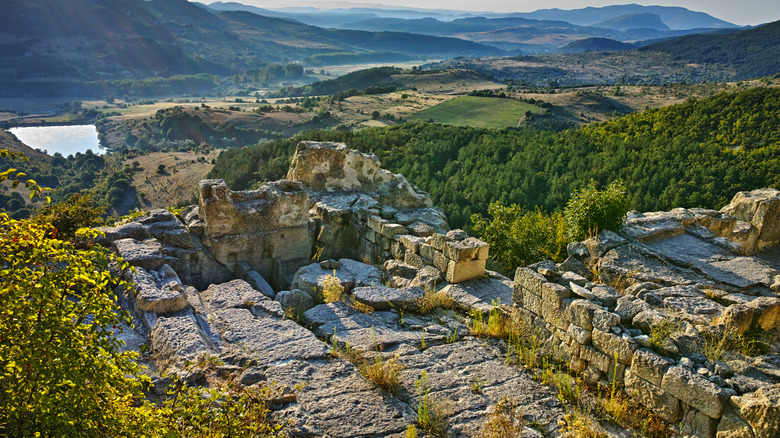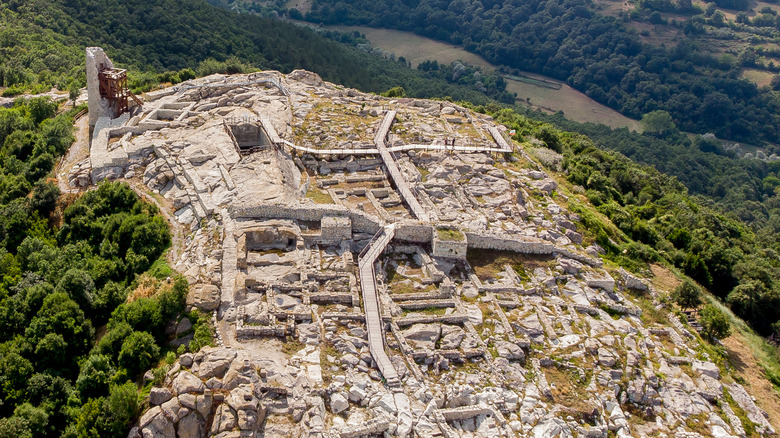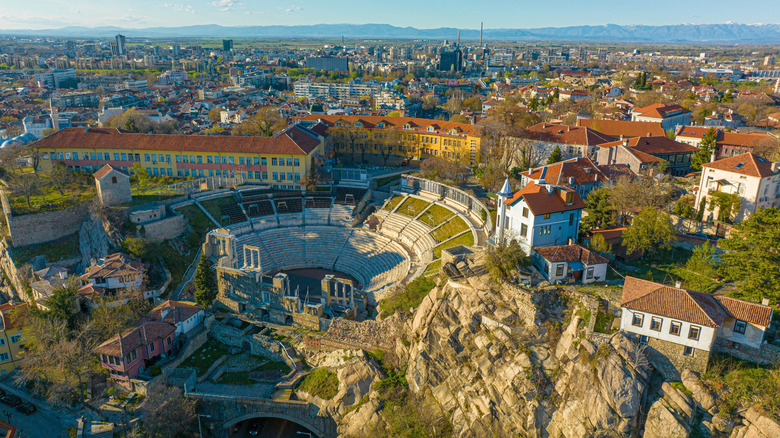The 'Machu Picchu Of Europe' Is A Striking Ancient Site More Affordable To Visit Than South America's
There are almost too many contenders for the title of Europe's Machu Picchu, the imperial complex lost for centuries to the mountains and forests, unconquered by massacring conquistadors. After all, Europe's empires are far older than their Peruvian counterparts. Machu Picchu was built only 550 years ago, on the cusp of Europe's early modern age, just after another city in Europe's southeastern mountains began its downfall. Perperikon, laid to ruin in the Bulgarian mountains, ended a 6,000 year stretch of inhabitation in the 14th century.
One of Europe's cheapest, most underrated countries, a Bulgarian jaunt will cost you far less than Peruvian vacation. For starters, you won't have to hire a guide to safely take you on the iconic trail is known as the 'hike of death' or a multi-day trek to the hidden ruins of the Inca Empire. Instead, you can rent a car for an average of 40 BGN or $21.65 USD per day and drive two hours from the central city of Plovdiv to explore here.
With strong seasons, planning your trip in accordance with the weather is important. In winter, the ruins are dusted with snow, while the summer sun is scorchingly high, so shoulder seasons are recommended.
Uncover the ancient city of Perperikon
Perched 1,400-feet above sea level, the fortified city of Perperikon held a vantage over the Perpereshka river valley for millennia. Archaeologists believe it to be the site of the Temple of Dionysius, where Herodotus records the travels of pilgrims meeting the oracle of the god of wine. According to legend, the psychic delivered two of the most crucial prophecies of antiquity: The great conquest of Alexander and of the strength of Gaius Julius Caesar Augustus. Roaming between the laneways, reduced now to large slab stones of rubble, you can envision the weary souls trooping through the Bulgarian mountains to seek solace with the famed oracle.
You'll also find the outlines of the city walls, palaces, and suburbs that stretched out around the temple. A royal residence of Thracian tribes, a stately Roman city, and foundation stones were left after the Goths razed the city in 378 AD. In the aftermath, when Christianity rose to the fore, the city again became a religious centre. This was its final era of prosperity, marred by wars over its control between the Bulgarians and Byzantines, before the Ottomans destroyed the fortress city once and for all in the 14th century.
After roaming between its sloping streets, visit the History Museum in Kardzhali. Here, you'll find the best of the artifacts uncovered in the excavation of this significant historic site.
Witness the crossroads of ancient empires in Bulgaria
Starting in the budget-friendly, walkable capital city of Sofia, roam above the walls of the Serdika Archaeological Complex. Fragmented under eight streets of the city center, the homes, basicilias, and bathhouses of the Roman metropolis of Serdica span out under the capital. Bulgaria's second largest city was constructed on top of another Roman stronghold, Philippopolis, and its arcane amphitheater still stands in only semi-dilapidated glory in the middle of town.
Underneath the main pedestrianized shopping street runs a Roman stadium, where chariots once raced for cheering spectators. To the east, in Varna, a Necropolis stands on the banks of the Black Sea. Housing gold treasures forged in between 4600 BC and 4200 BC, it is also the location of nearly 300 graves dug in prehistory.
In the heartlands of the large eastern nation, the Valley of the Thracian Kings sprawls out somewhat less conspicuously than its Egyptian counterpart. Concealing over 1500 tombs of antiquity, it's the burial site of the kingdom that birthed the famed cult of Dionysius, the song-spinning Argonaut Orpheus, and the renowned gladiator Spartacus.


